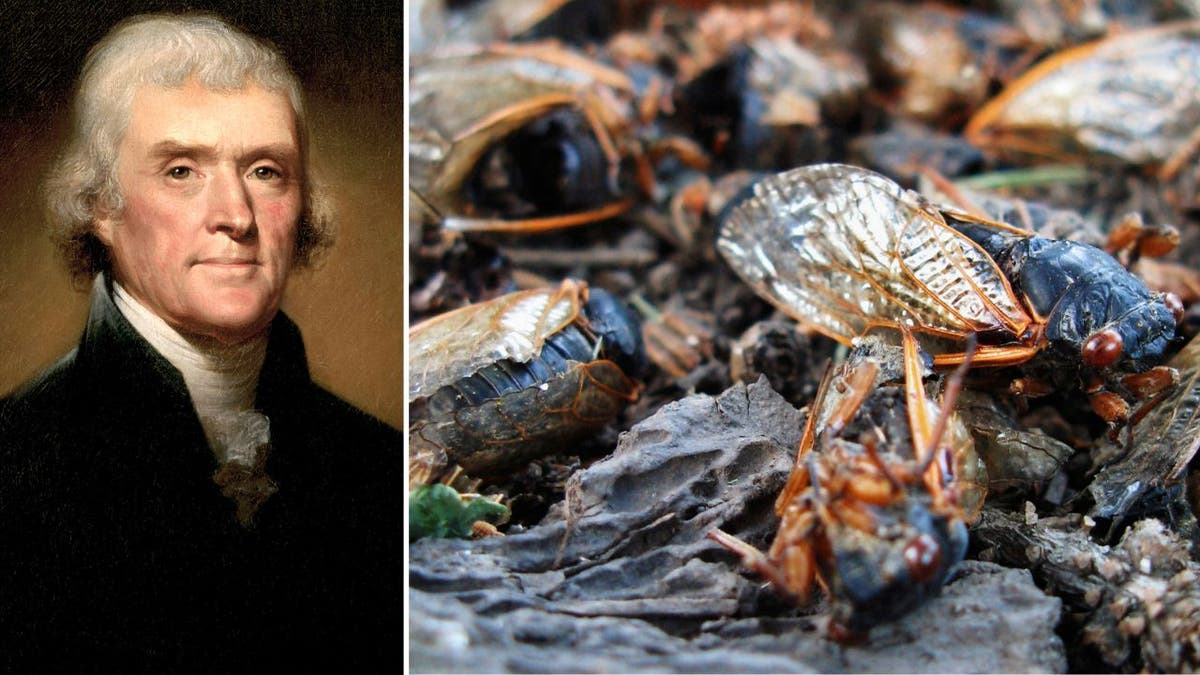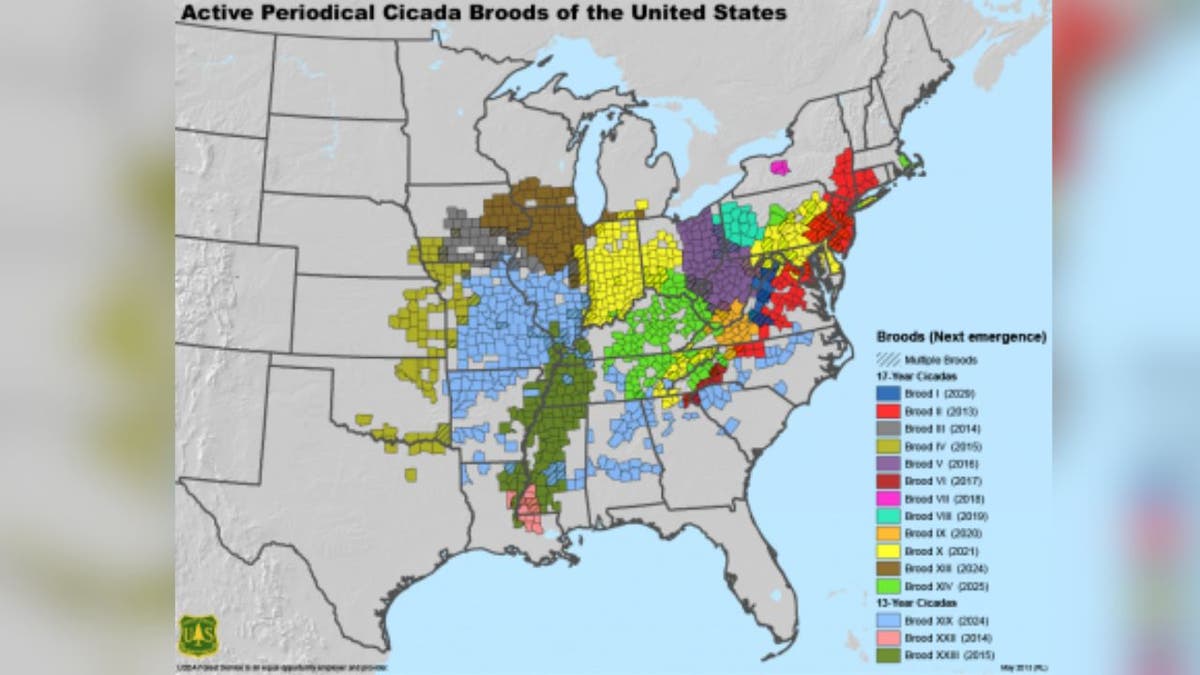Billions, if not trillions, of two groups of noisy flying insects are expected to emerge from the underground in 17 U.S. states in April in a rare natural phenomenon not seen since 1803.
The insects, known as cicadas, are set to spring up and engage in a frantic mating frenzy lasting several weeks before they will all eventually die near trees.
But that’s not before they lay eggs on forest floors and the cycle of life begins anew.

It will be the first time in 221 years that two types of cicadas -- brood XIX and XIII-- have risen from the ground at the same time, back when Thomas Jefferson was president, and it is not expected to happen again until 2244. (VCG Wilson/Corbis via Getty Images, Associated Press)
RARE BROODS OF CICADAS TO ARRIVE SOON: WHEN TO EXPECT THEM AND WHAT IT MEANS FOR YOU
It will be the first time in 221 years that two types of cicadas -- brood XIX and XIII-- have risen from the ground at the same time, back when Thomas Jefferson was president, and it is not expected to happen again until 2244.
The one to two-inch-long bugs possess sturdy bodies, bulging compounded red eyes and membranous wings with a three-inch wingspan.
But don't be alarmed, cicadas are not harmful to humans, pets, household gardens, or crops, the Environmental Protection Agency says. In fact, they are a valuable food source for birds and mammals. Cicadas can aerate lawns and improve water filtration into the ground while they add nutrients to the soil as they decompose.
Most cicada species come out every year, but in the United States, there are two periodical broods of cicadas that stay underground for either 13 years or 17 years.
"The co-emergence of any two broods of different cycles is rare, because the cycles are both prime numbers," John Cooley, a cicada expert at UConn told Live Science.
"Any given 13 and 17-year broods will only co-emerge once every 13 x 17 = 221 years."
Brood XIII cicadas appear on a 17-year cycle, and are restricted mostly to northern Illinois, eastern Iowa, southern Wisconsin and a few counties in extreme northwestern Indiana, according to entomologist Floyd Shockley of the Smithsonian Institution's National Museum of Natural History in Washington.
Brood XIX emerges on a slightly shorter 13-year cycle, and are widely distributed from Alabama, Arkansas, Georgia, Indiana, Illinois, Kentucky, Louisiana, Maryland, Missouri, Mississippi, North Carolina, Oklahoma, South Carolina, Tennessee and Virginia - a total of 15 states, according to Shockley. The two broods together span parts of 17 states.

An active periodical map showing where cicadas emerge. (USDA Forest)
RARE ‘SIMULTANEOUS EXPLOSION’ OF CICADAS EXPECTED FOR FIRST TIME IN 221 YEARS
These two broods overlap only in a small area in central Illinois and sometimes in Indiana. They are close enough potentially to have some interbreeding between broods.
Female cicadas make slits in small tree branches and usually lay 20 to 30 eggs in each slit. A female can lay 400 to 600 eggs in a lifetime. The eggs hatch from late July to early August. Then the cicadas fall to the ground and immediately burrow underground. They can smell badly if they die in large numbers together.
They cannot lay eggs in your skin, Cooley told MassLive.
"This summer, some will get a chance to witness a phenomenon rarer — and probably louder — than Halley’s comet," Cooley said.

A Brood XIII cicada waits for its wings and new exoskeleton to dry and harden after climbing and molting on a tree. ((E. Jason Wambsgans/Chicago Tribune/Tribune News Service via Getty Images)
CLICK HERE TO GET THE FOX NEWS APP
"You cannot possibly be unaware that periodical cicadas are out, because they’re out by the millions and millions, and they’re noisy, charismatic, active insects that are just everywhere," Cooley said.
Cicadas can be dangerous to young trees, however, as they lay their eggs in small tree branches which can harm the tree, the EPA says. The agency advises covering maturing saplings in mesh or netting to keep the insects out.
Reuters and the Associated Press contributed to this report.

